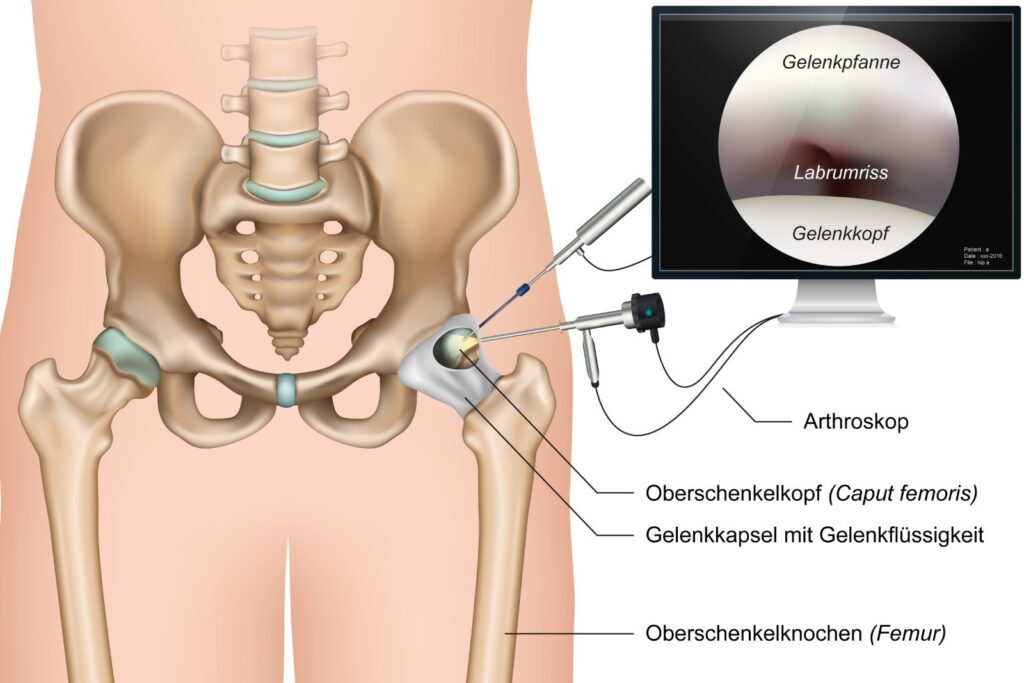Chronic hip pain can be a real game-changer in our everyday lives. It might make simple activities like walking, bending, or even sitting a challenge. This sort of discomfort affects not just our mobility but also our productivity and enjoyment of life. Hip arthroscopy presents a shift towards relief, making activities that we love possible once more.
Common Causes of Chronic Hip Pain
Chronic hip pain might sprout from various issues like labral tears, cartilage damage, or hip impingement. Sometimes, over time, osteoarthritis can also creep in, causing discomfort. These conditions wear down the joint and lead to a reduced range of motion. An effective way to tackle these problems is through hip arthroscopy surgery. Using this minimally invasive technique, surgeons can precisely address the damaged tissues and improve joint function.
Hip Arthroscopy helps by allowing a direct look into the joint. Surgeons can fix issues like:
- Labral tears: These are common and usually make the hip feel like it’s clicking or catching.
- Cartilage damage: Damage here might lead to arthritis if not treated.
- Impingement: Abnormal bones can cause pain during hip movement.
- Osteoarthritis: While it’s more complex, early treatment can alleviate pain.
Symptoms Indicating the Need for Surgery
Certain symptoms might suggest that surgery could be a solution. Do you frequently experience intense pain in your hip? Is it stiff or swollen regularly? These, along with a noticeable decrease in mobility or strength in the joint, might mean it’s time to consult a doctor about hip arthroscopy.
Hip Arthroscopy as a Minimally Invasive Solution
Instead of opting for traditional surgery with large incisions, hip arthroscopy procedures offer a less invasive route to recovery. It involves small cuts where a camera and surgical tools are inserted. This helps in exploring and treating the joint without extensive damage. Consequently, this leads to faster healing and less pain.
The Hip Arthroscopy Procedure: Steps, Benefits, and Considerations
Step-by-Step Overview of the Procedure
Here’s how the hip arthroscopy procedure is typically performed:
- Preparation: You’ll be given anesthesia. The skin around the hip is cleaned to avoid infection.
- Incisions: Small cuts are made to insert the camera and tools. They help visualize and address the problem.
- Equipment Usage: Using the camera’s guidance, surgeons work on the hip joint, correcting issues.
Benefits of Hip Arthroscopy
Hip arthroscopy pros and cons should be considered carefully. On the plus side, the procedure disrupts very little tissue. Faster recovery times let patients jump back into their day-to-day activities sooner. Plus, the chance of complications is generally lower compared to more invasive surgeries.
Considerations and Risks
Although the benefits are numerous, there are some considerations. Not every patient is an easy candidate for this surgery. It works best if the hip had only mild to moderate damage. Also, it’s important to be aware of potential hip arthroscopy complications like infections or nerve damage, though they are rare.
Adoption of Technological Advancements
Technology in hip arthroscopy continues to evolve. Advances in imaging and surgical tools have made procedures more precise and effective. Surgeons now have access to better visualization and can refine their technique in real-time, reducing recovery time and enhancing outcomes.
Recovery and Rehabilitation: A Pathway to Mobility
Guide to Recovery
After hip arthroscopy, recovering includes several steps. Expect to spend some time resting initially. Follow post-operative instructions carefully, as they are vital. Physical therapy is often recommended to restore your mobility and strength. The timeline varies, but many return to light activities within a few weeks.
Practical Tips to Optimize Healing
For a successful recovery from hip arthroscopy, consider these practical tips:
- Stick to your Therapy Plan: Physical exercises are key.
- Manage Pain Care: Take medications as instructed.
- Rest as Needed: Don’t rush back into strenuous activity too soon.
- Eat Healthy: A good diet aids healing.
Addressing Common Myths
Some myths make recovery sound daunting. However, people often do quite well after hip arthroscopy. The most enduring myth is that recovery is slow. Comparatively, it is usually swift and manageable.
Long-term Outcomes
The outcomes of hip arthroscopy are often positive. Many regain a full range of motion, and an improved quality of life is common. There’s a significant satisfaction level given that pain reduces, and regular activities become enjoyable again. This minimally invasive surgery provides a better chance at an active life.
Conclusion and Resources
Hip arthroscopy surgery plays an invaluable role in managing chronic hip pain. It offers clear benefits over more traditional approaches. For many, it’s a pathway to restored mobility and relief from day-to-day discomfort.
However, since every case is unique, it’s wise to seek personalized advice from healthcare professionals who understand the nuances of your situation.
For those looking for further information on hip arthroscopy, consider visiting reputable medical organizations’ websites. They offer a treasure trove of resources, from detailed explainers and patient stories to health tips and latest research updates. This knowledge can empower your journey to better hip health.
